People often have the misconception that objects we collect and preserve in the museum collection just sit around in the dark, and no one will ever see them unless they are on exhibit. On the contrary, the objects we hold have many purposes beyond exhibits. In my mind, research is one of the most useful purposes for an object in our collection. Our ethnographic collection has the most research requests, followed by our natural history collection. We have almost 4,000 specimens in natural history including large elk and bear mounts, small humming birds, fish, reptiles, insects, rocks, and fossils. Since many of our animal specimens were collected between 1900 and 1930, they represent species that are still common, some that are rare or no longer found in North Dakota, and a few that are now extinct.
Our natural history collection has generated myriad research projects. In 2001 our black-footed ferrets had their DNA tested by a researcher from the Smithsonian National Zoological Park. She was looking at the loss of genetic diversity in black-footed ferrets when they almost went extinct in the 1980s. In 2012, a student working on his master’s degree in natural resource management cataloged the Holton Shaw egg collection (1991.54). The Shaw egg collection had been in our possession since 1924 but was never cataloged into the database since we didn’t have a biologist on staff. His work made this collection usable for future researchers. In 2014 our passenger pigeon drew visitors because of the 100th anniversary of the pigeon’s extinction.
Recently the State Historical Society of North Dakota and the University of Mary have invested time into a mutually beneficial research opportunity. When Dr. Michael Lares, a biology professor teaching an ornithology class, asked if his students could have access to our bird mounts and egg collections, I said “yes” with a slight hesitation. My hesitation was not because they were students, but rather because most of our specimens are preserved with arsenic, and I wanted to make sure the students would be safe when handling them. From our over 350 bird mounts and study skins, Dr. Lares picked study skins for the first lesson. The students learned how to take measurements that a researcher would normally do in the field. Learning how to do this on a dead specimen is much easier than on a live one. The students were able to learn how similar species varied and about the variation between individuals of one species.
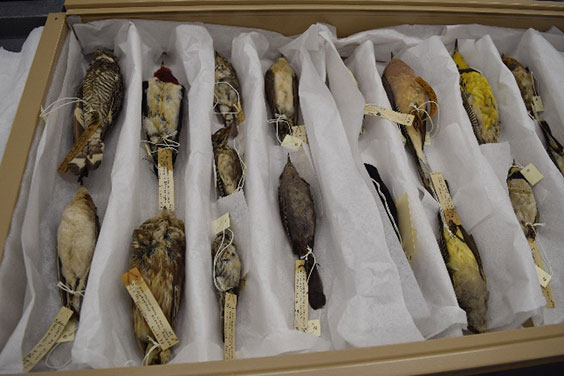
Study skins in storage. A study skin is typically stuffed with cotton with no attempt at a life-like pose.
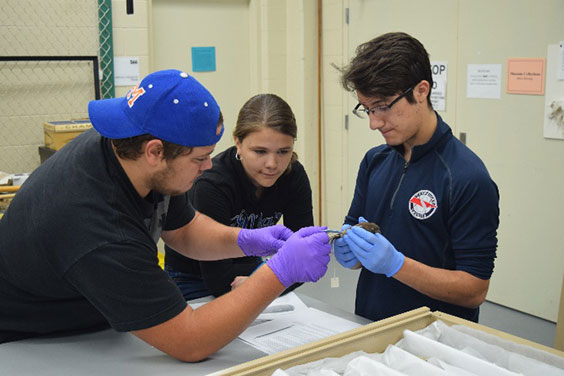
University of Mary students measuring a bird.
During the second lab, the students looked at the eggs. With more than 800 clutches of eggs (a clutch could consist of one egg to more than a dozen), they had many to choose from. The students gained experience measuring and describing eggs. They learned how size and shape varied between species and how shape and color were related to the nesting habitat.
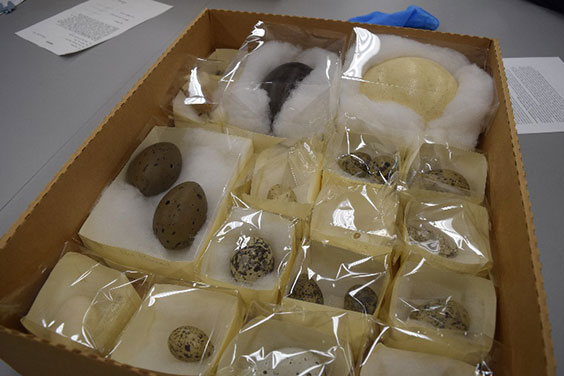
Bird eggs in their storage boxes.
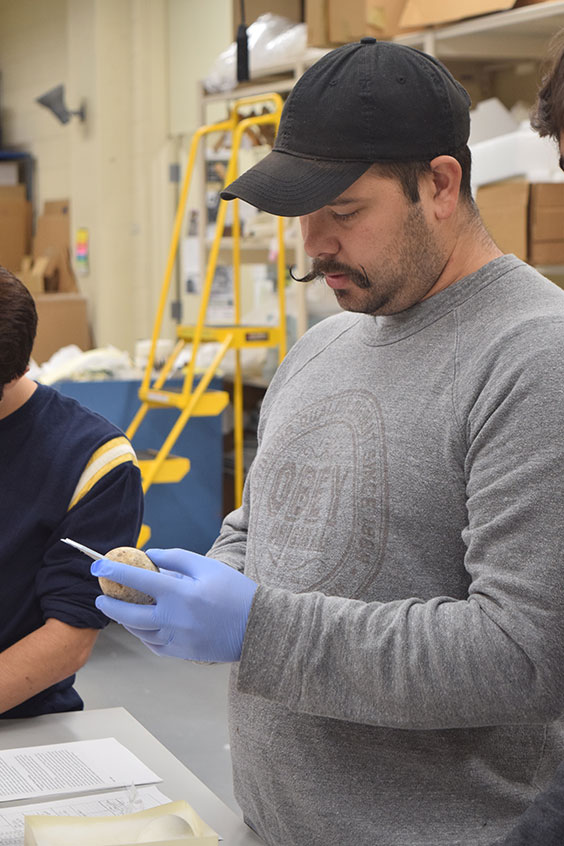
Student measuring an egg.
Their third visit was set aside for a project to help the bird collection. I learned that as science progresses, the scientific names of birds have changed. The students checked the identification of a group of birds to see if they were properly identified.
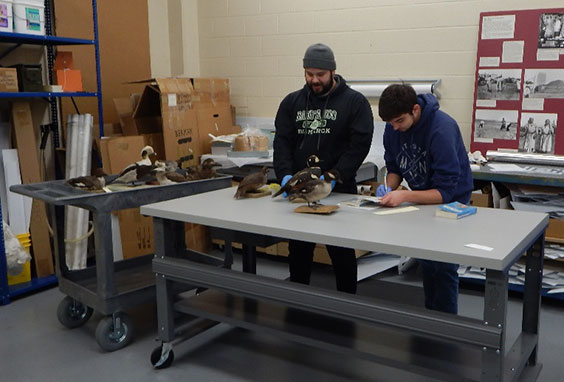
Students checking on bird identification.
This past year I also had the students photograph the birds. Many of birds were brought into the collection before photographing artifacts became standard practice. These photographs allow us to track changes to any artifact over time.
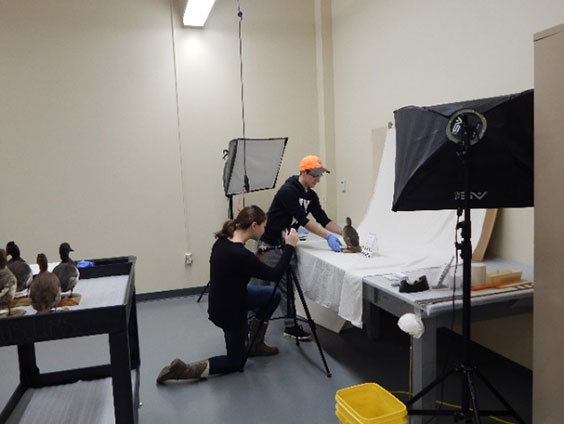
Students photographing a duck.
This winter I was able to call on Dr. Lares and a few students to help me when I found some of the boxes that housed the eggs had been damaged during a water leak in our collections storage. I also found that all of the acid-free boxes had become acidic in the 27 years they had been used store the eggs. Dr. Lares and his students in one day made new acid-free boxes, transferred the eggs to the new boxes, put the eggs in numerical order, and did a box inventory. They found a few inventory mistakes including eggs in wrong boxes and clutches spread over two boxes. The eggs are now housed properly, and the database is up to date.
Dr. Lares commented, “I would not be able to teach the ornithology lab without the help of the collections at the Heritage Center, as study skins are difficult to obtain. Being able to work with the collection is a great opportunity for my students, and we also appreciate being able to give back through projects like verifying the identity of birds, photographing the specimens and re-housing eggs. It is a mutually beneficial collaboration.” In turn, I really appreciate all that Dr. Lares and his students have done to help the bird and egg collections. It is also good to know that these collections are being used for educational purposes.
There are still many opportunities for scientific research of all kinds in the State Historical Society’s natural history collections. For example, we are currently looking for someone who might be interested in working with our insect collection that has never been cataloged, nor have the insects been completely identified.
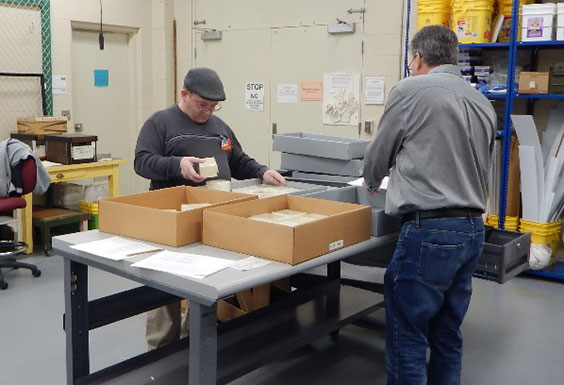
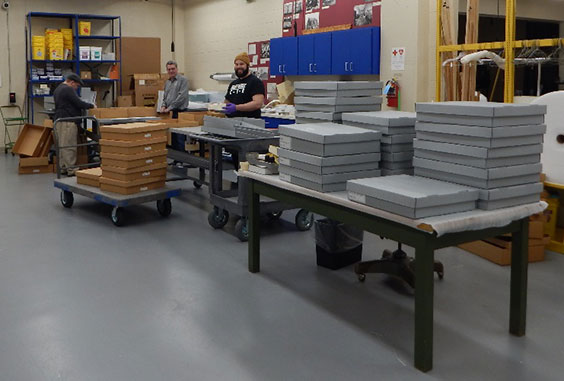
Students with Dr. Lares rehousing eggs.

